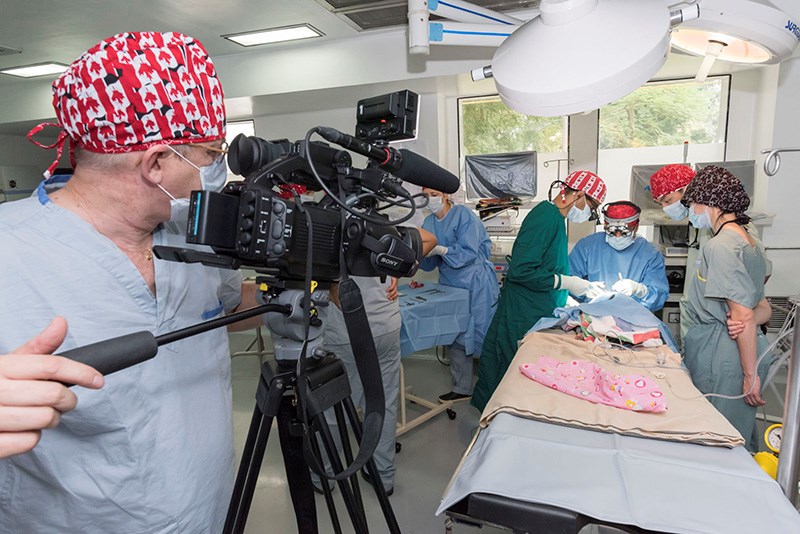Randy Mennie has chased ambulances and fire trucks in the middle of the night to tell stories of calamity and mayhem on the TV news. He has pursued reluctant interview subjects through a rainstorm with a 20-lb. video camera perched on his shoulder. He has staked out courthouse steps for hours waiting for lawyers to emerge after a contentious verdict.
But nothing could prepare him for what he witnessed on his first trip to India as a photographer for Operation Rainbow, a volunteer effort by doctors and nurses to make life better for people living with medical issues like cleft palate and burns in developing countries.
Mennie, 59, is now preparing to embark Oct. 18 on his third such journey.
And like his day-to-day job for the past 13 years as a cameraman for Global TV, he has no idea what to expect after he walks out the door of his Coquitlam home.
Mennie is currently on disability leave from his job after suffering a debilitating shoulder injury that keeps him from hoisting a heavy video camera. So this time, he’ll be documenting the medical mission with a much smaller and lighter digital still camera and editing another cameraman’s video.
But the goal is all about telling the stories of some of the challenges overcome and miracles achieved over a week in Hyderbad, India by the 30-strong team of doctors and nurses. Those stories are then shared on the organization’s website and with media outlets to generate donations of money and supplies for further medical missions.
Since it was founded in 1998, Operation Rainbow has completed almost 30 missions and helped more than 2,000 patients.
Mennie said it’s humbling to see the medical professionals help dozens of patients, many of whom have traveled hundreds of miles, over the course of their 12- to 14-hour days, usually in basic conditions.
“All you can do is watch, but then you think what an incredible profession to be able to help people in that way,” Mennie said.
The medical team brings its own equipment, essentially moving an entire small hospital packed in cases in the belly of a plane. All of it is donated, right down to bandages and the hats knitted by volunteers in Spuzzum, B.C. that are distributed to some patients.
And the work they do can have a profound impact on the lives of the patients, Mennie said, adding people suffering burns or afflicted with cleft palates are often ostracized from their community, unable to get an education or work.
“But after surgery, they’re welcomed back almost as heroes,” he said.
Mennie said while his years covering news have desensitized him to some of the blood and guts he might witness in the operating room, he can’t help but feel empathy for the people whose stories he’s charged with telling.
One of those is the young patient who came to the Operation Rainbow teaching clinic in Cambodia a few years ago with his entire body disfigured by burns yet persevering despite the constant debilitating pain.
“You realize we’re all basically the same,” Mennie said. “It’s by the luck of the draw where you were born.”
That lesson stays with him long after he returns home, Mennie said.
“You relax more and you appreciate what you’ve got.”
• To learn more about Operation Rainbow, go to www.operationrainbowcanada.ca.



